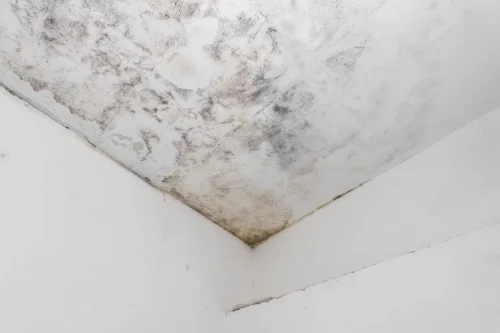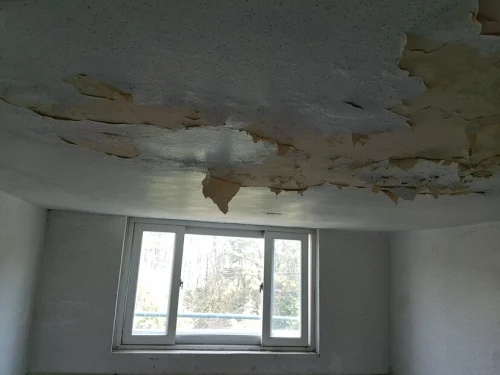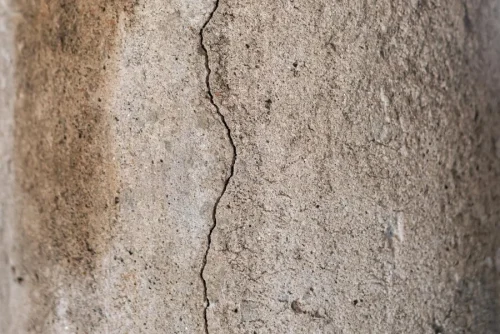
Types of Beds for the Ultimate Bedroom Makeover
April 16, 2025
Beautiful 2 BHK Home Design in Village for a Simple and Peaceful Life
April 16, 2025Table of contents
- Why Terrace Waterproofing Is Important
- When Do You Need A Waterproofing Chemical for Terrace?
- Types of Waterproofing Chemicals for Terrace
- How to Choose the Best Waterproofing Chemical for Terrace
- Additional Waterproofing Methods
- 1. Drainage Systems for Terraces
- 2. Protective Roof Coatings
- Mistakes to Avoid During Terrace Waterproofing
- FAQs
Water seepage through terraces is one of the most common structural issues in buildings, especially for people living on top floors. Without proper waterproofing, terraces can develop cracks, leaks, and even cause severe structural damage. In older buildings, seepage can weaken the surface, cause damp patches on ceilings and walls, and lead to expensive repairs. Using the right waterproofing chemical for terrace helps prevent this damage and extends the life of your structure.
This blog will explain everything you need to know about terrace waterproofing, from choosing the best waterproofing solutions for terrace, correct application, and when it's needed.
Why Terrace Waterproofing Is Important
Terraces are constantly exposed to rain, sunlight, temperature changes, and dust. Over time, these factors break down the surface, leading to cracks and water seepage. If not protected, this can cause structural deterioration, mold growth, and health hazards. In severe cases, it impacts the integrity of the entire building.
Applying the right waterproofing chemical for terrace creates a protective layer that blocks water penetration and prevents damage at the source.
When Do You Need A Waterproofing Chemical for Terrace?
Y consider applying a waterproofing chemical for terrace under the following conditions:ou should
Water Leakage During or After Rainfall
If you notice water dripping from the ceiling or damp spots appearing after rain, it is a clear sign of terrace water seepage. This usually means that the top surface is no longer waterproof and is allowing water to penetrate through the structure.
Damp Patches on Ceilings or Top-Floor Walls
Moisture trapped inside concrete or brickwork often shows up as dark patches on ceilings or upper-floor walls. This not only affects paint and plaster but also promotes mold and mildew growth, which can affect indoor air quality.
Peeling Paint or Surface Bubbling
When moisture seeps through a terrace, it causes the internal layers of paint or plaster to lose adhesion. This leads to peeling, flaking, or bubbling paint on both internal and external walls
Efflorescence (White Powdery Deposits)
If you notice white, chalky stains on your terrace floor or walls is called Efflorescence and it’s different from paint chalking, it’s a result of soluble salts being pushed to the surface by rising moisture. This condition weakens the structure over time and is a strong indicator of seepage.
Cracks on the Terrace Floor or Joints
Visible cracks and even hairline ones, can become water entry points during rain. If left untreated, water seeps through these cracks, reaches the reinforcement layer, and accelerates corrosion, weakening the entire slab.
New Construction or Renovation Projects
Even if no signs of damage are present, applying a waterproofing chemical for terrace during construction or while renovating helps avoid future problems. Prevention is more effective and cost-efficient than repair.
High-Rainfall or Coastal Areas
If your property is located in a region with heavy rainfall or high humidity levels, terrace waterproofing becomes essential. Without it, constant moisture exposure leads to fast surface deterioration.
Types of Waterproofing Chemicals for Terrace
Each waterproofing chemical for terrace application offers different levels of protection based on surface type, weather exposure, and structural movement. Here’s a breakdown of the most commonly used options:
Acrylic-Based Coatings
These water-based coatings are ideal for residential terraces. They’re easy to apply, dry fast, and provide a flexible waterproof layer. Best suited for areas with minimal foot traffic, they help seal small cracks and resist UV rays. However, they’re not the most durable option for high-stress surfaces.
Polyurethane (PU)-Based Systems
PU coatings offer excellent elasticity and long-lasting waterproofing. They form a flexible membrane that adapts to surface movements, making them ideal for terraces with foot traffic or temperature variation.
Cementitious Waterproofing Compounds
Cementitious waterproofing compounds are made from cement-based mixes and applied directly onto concrete surfaces. They’re durable, affordable, and perfect for new construction or repair work. Since they form a rigid layer, they’re best used on stable surfaces with minimal structural movement.
Bituminous Membranes or Coatings
These bitumen-based products provide tough, long-term protection. Available as sheet membranes or liquid coatings, they’re ideal for heavy-duty waterproofing in commercial or weather-exposed areas. Some options include added UV-resistant finishes.
How to Choose the Best Waterproofing Chemical for Terrace
To select the right waterproofing chemical for terrace, consider the following factors:
- Climate: Areas with heavy rain require stronger waterproofing solutions.
- Flooring of the terrace: Concrete, tiles, and stone surfaces need different treatments.
- Ease of application: Some products are DIY-friendly, while others require professional installation.
- Durability: Choose a product that offers long-term protection with minimal maintenance
Additional Waterproofing Methods
1. Drainage Systems for Terraces
Installing proper drainage systems can prevent water buildup and enhance the effectiveness of waterproofing solutions. Ensure that:
- Drains are clear of blockages.
- Water flows away from the terrace surface.
- Slopes are designed to guide water toward drainage outlets.
2. Protective Roof Coatings
Using additional protective coatings can further enhance waterproofing, providing an extra layer of security against leaks and surface wear.
- UV-resistant coatings prevent damage from sunlight.
- Acrylic and silicone-based coatings improve waterproofing efficiency.
Mistakes to Avoid During Terrace Waterproofing
Even the best waterproofing chemical for terrace application will not work if applied incorrectly. Always follow product instructions or consult a professional. Here are common mistakes to avoid, whether you're doing it yourself or hiring a professional:
- Skipping surface cleaning before application
- Using incompatible products on existing coatings
- Applying a thin or uneven layer
- Ignoring joints, corners, and wall-terrace junctions
- Failing to allow enough curing time
- Wrapping Up
A waterproofing chemical for terrace application is essential to protect your home from long-term damage. Whether you're building a new home or renovating an older one, take the time to assess your surface and compare product features before getting started.
And while you're reinforcing your terrace, don’t overlook the rest of your home. Explore high-strength options like uPVC windows, uPVC doors, or uPVC profile systems from GreenFortune.
FAQs
1. How long does terrace waterproofing last?
The durability of waterproofing depends on the method used. High-quality waterproofing chemicals can last 5–10 years with proper maintenance.
2. Is a waterproof plastering chemical needed if the terrace is already waterproofed?
Yes. A waterproof plastering chemical protects walls by reducing water absorption and supports the main waterproofing chemical for terrace.
3. Is a waterproofing chemical for DPC the same as terrace waterproofing?
No. A waterproofing chemical for DPC (Damp Proof Course) stops moisture rising from the ground, while a waterproofing chemical for terrace blocks rainwater from the top.
4.Is waterproofing necessary for tiled terraces?
Yes. Water can seep through tile joints and lead to leaks. A waterproofing layer beneath the tiles is essential.















